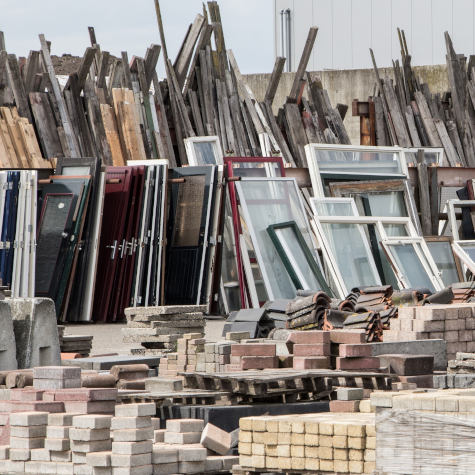Did you know that the built environment consumes nearly half of all materials extracted globally each year?
That’s especially bad news when you consider that by 2060, the weekly global construction footprint is estimated to equal a city the size of Paris. The rapidly-expanding build environment is putting immense strain on Earth’s limited resources, with new construction projects contributing significantly to carbon emissions.
Figures like this represent a clear call for the preservation and enhancement of existing structures rather than the costly and wasteful creation of new ones. However, such a shift requires a radical reevaluation of construction practices, focusing on retention, improvement, and repurposing to reduce the demand for new construction.
Enter the circular economy, a closed system of production emphasizing maintenance, reuse, refurbishment, and recycling. This model aims to address environmental challenges by curbing the consumption of finite resources. The circular economy calls for a holistic shift in business practices, urging industries to adopt sustainable resource management and reduce carbon footprints at every turn.
The benefits are clear: forecasters project a 38% reduction in global CO2 emissions from building materials by 2050 if the circular economy is fully embraced by the construction. industry. The use of eco-friendly construction materials and methods also enhances physical and mental health, increasing productivity by up to 10%.
This model has immediate benefits for construction projects, enhancing resilience to supply chain disruptions and mitigating the price volatility of raw materials by providing locally-available reused alternatives. This also boosts local economies, with material reuse hubs and transportation companies creating stable, low-carbon job opportunities.
When it comes to the future of the construction sector, the circular economy model also presents an opportunity to rethink business models, integrate innovations, and create a global market that’s predicted to exceed £5 billion by 2025.
Investors and construction clients stand to gain an improved return on investment, while meeting government targets for reducing carbon emissions.
By championing the circular economy and working for a more collaborative, carbon-neutral business model, property professionals at every level of the industry can help pave the way for sustainable growth, economic resilience and social well-being.
Read our complete guide to the circular economy in construction to learn more about the benefits and barriers associated with this imminent and important industry shift.
Read the article

